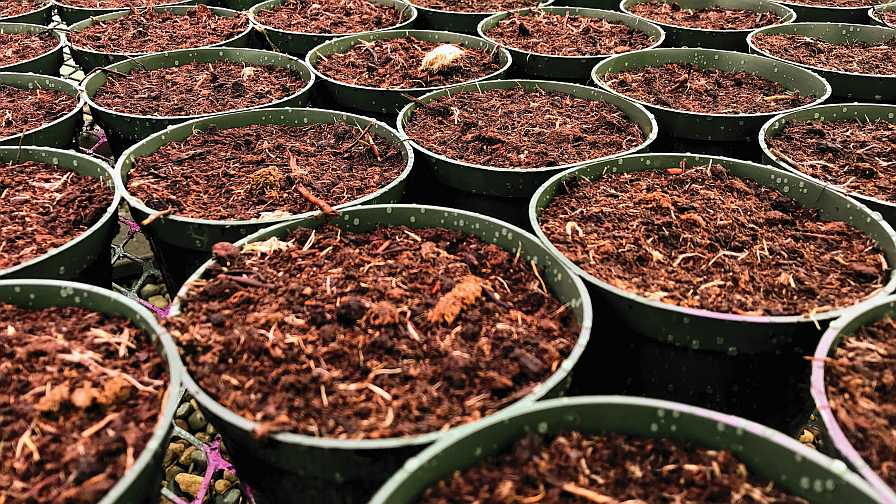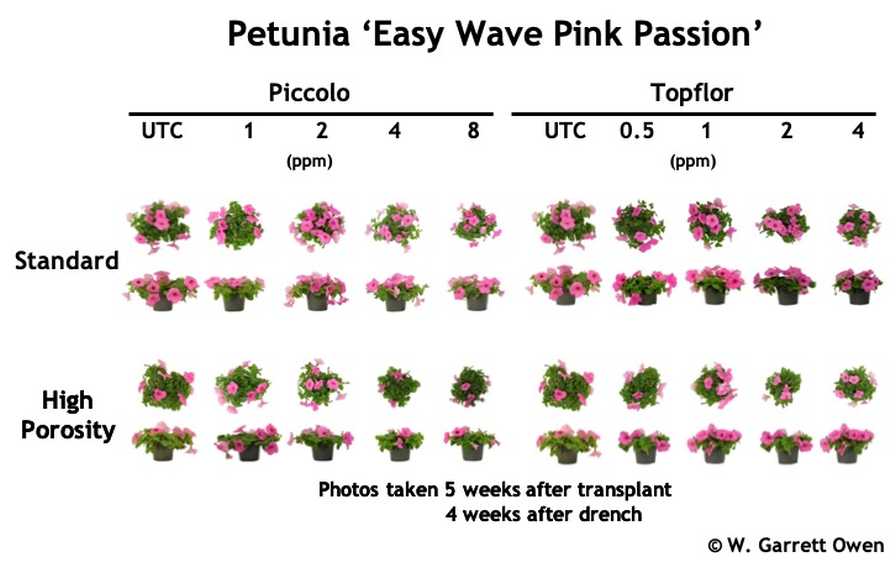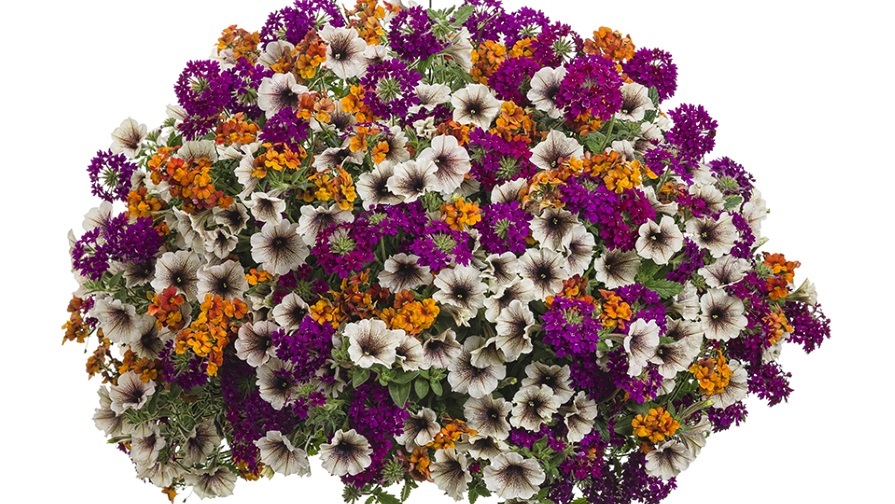Ways PGR Drenches Can Work in Wood Fiber Substrates

Growers who have mixed feelings about adopting commercially available wood fiber substrates for production should consider conducting in-house trials.
Photo by W. Garrett Owen
Rivaling the tried-and-true peat-lite mixes, commercially available substrates containing fibrous wood material have gained considerable attention among greenhouse growers. Some growers were quick to adopt wood fiber substrates, while others remain skeptical of implementing and changing production practices.
While it is recommended to conduct small in-house trials before making the switch, for example, from peat- to wood fiber-based substrates, those who did not voiced concerns to researchers. Of those, growers were concerned that the efficacy of their plant growth regulator (PGR) drenches would be reduced or tied up.
In response, a series of PGR drench trials were conducted at Michigan State University (MSU) to determine if two commercially available wood fiber substrates affect PGR drench efficacy.
PGR Drench Trials
Geranium ‘Bullseye Red,’ Petunia ‘Easy Wave Pink Passion,’ and ‘Easy Wave Violet’ were grown in 4½-inch containers filled with either standard or high-porosity, commercially available wood fiber substrates (Berger). Two weeks after transplanting, 2 fluid ounces of solution containing either 1, 2, 4, or 8 ppm active ingredient (a.i.) per pot paclobutrazol (Piccolo, Fine Americas, Inc.) or 0.5, 1, 2, or 4 ppm a.i. per pot flurprimidol (Topflor, SePRO Corp.) were applied as a substrate drench. A no-chemical PGR drench, i.e., 0 ppm tap water drench, served as an untreated control (UTC).
Plants for the experiment were grown in a double-poly covered greenhouse at the MSU Tollgate Farm and Education Center in Novi, MI, under an average daily light integral and air temperature of 10 ± 1.2 mol·m–2·d–1 and 68ºF ± 2.7ºF, respectively. Plants were irrigated as needed with 150 ppm nitrogen provided by a 17-4-17 water-soluble fertilizer and acidified water. After five weeks, plant height, width, and dry weights were determined.

Figure 1. Geranium ‘Bullseye Red’ grown in standard (top row) or high-porosity (bottom row) wood fiber substrate (B4, Berger) and drenched with 2 fluid ounces of solution containing either 1, 2, 4, or 8 ppm active ingredient (a.i.) per pot paclobutrazol (Piccolo, Fine Americas, Inc.; left) or 0.5, 1, 2, or 4 ppm a.i. per pot flurprimidol (Topflor, SePRO Corp.; right). A no-chemical plant growth regulator drench, i.e., 0 ppm tap water drench, served as an untreated control (UTC).
What We Learned
In general, paclobutrazol and flurprimidol drench activity was unaffected by standard or high-porosity wood fiber substrate composition.
As expected, when flurprimidol and paclobutrazol drench applications increased from 0 to 8 and 0 to 4 ppm a.i. per pot, height of geraniums grown in the standard wood fiber substrate was 12 cm (61%) and 10 cm (69%) shorter, respectively (Figure 1). Similarly, the height of geraniums grown in the high-porosity, wood fiber substrate was 12 cm (61%) and 9 cm (48%) shorter as paclobutrazol and flurprimidol drench applications increased from 0 to 8 and 0 to 4 ppm a.i. per pot, respectively.

Figure 2. Petunia ‘Easy Wave Pink Passion’ grown in standard (top row) or high-porosity (bottom row) wood fiber substrate (B4, Berger) and drenched with 2 fluid ounces of solution containing either 1, 2, 4, or 8 ppm active ingredient (a.i.) per pot paclobutrazol (Piccolo, Fine Americas, Inc.; left) or 0.5, 1, 2, or 4 ppm a.i. per pot Flurprimidol (Topflor, SePRO Corp.; right). A no-chemical PGR drench, i.e., 0 ppm tap water drench, served as an untreated control (UTC).
Geranium plant diameter followed a similar trend. For both petunia cultivars, a similar trend was observed where plant width and dry mass were smaller as paclobutrazol and flurprimidol drench concentration increased, regardless of wood fiber substrate composition (Figure 2).
For instance, in standard wood fiber substrate, plant diameter of Petunia ‘Easy Wave Pink Passion’ measured 8 cm (23%) and 7 cm (22%) smaller when plants were drenched with 0 to 8 ppm a.i. per pot paclobutrazol or 0 to 4 ppm a.i. per pot flurprimidol, respectively. Compared to the untreated control, petunia flower was delayed when plants were drenched with either paclobutrazol or flurprimidol, but all plants flowered by five weeks after drench application.
What You Need to Know
Based on the results, paclobutrazol and flurprimidol drench activity or efficacy was unaffected by the two commercially available wood fiber substrates trialed. Furthermore, growers can drench standard or high-porosity wood fiber substrate with 1 to 2 ppm a.i. per pot of paclobutrazol or 0.5 to 1 ppm a.i. per pot flurprimidol to control growth of geranium and petunia. Therefore, to control plant size, greenhouse growers switching from peat to wood fiber substrates may use similar drench concentrations of paclobutrazol or flurprimidol on both crops.
It is important to note that growth response to PGRs and wood fiber substrates (and/or other components) may vary for different crops. Consider conducting small, in-house trials to determine the desired growth control for your crop(s) and current substrate.
Overall, these trials provide evidence of the feasibility of growing in wood fiber substrates and producing marketable greenhouse crops, though more research is required as the development of new wood fiber substrates emerge into our growing industry.









